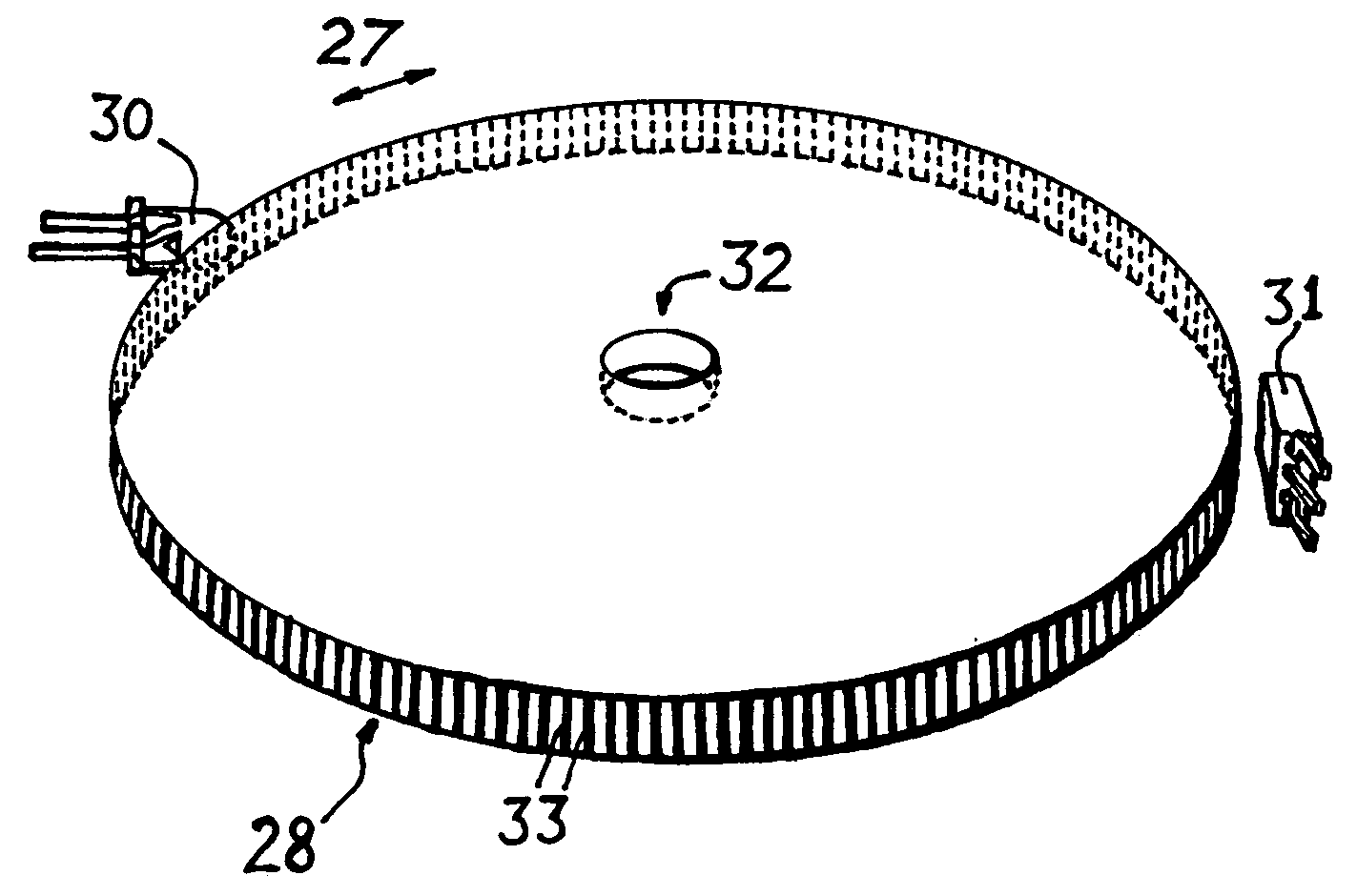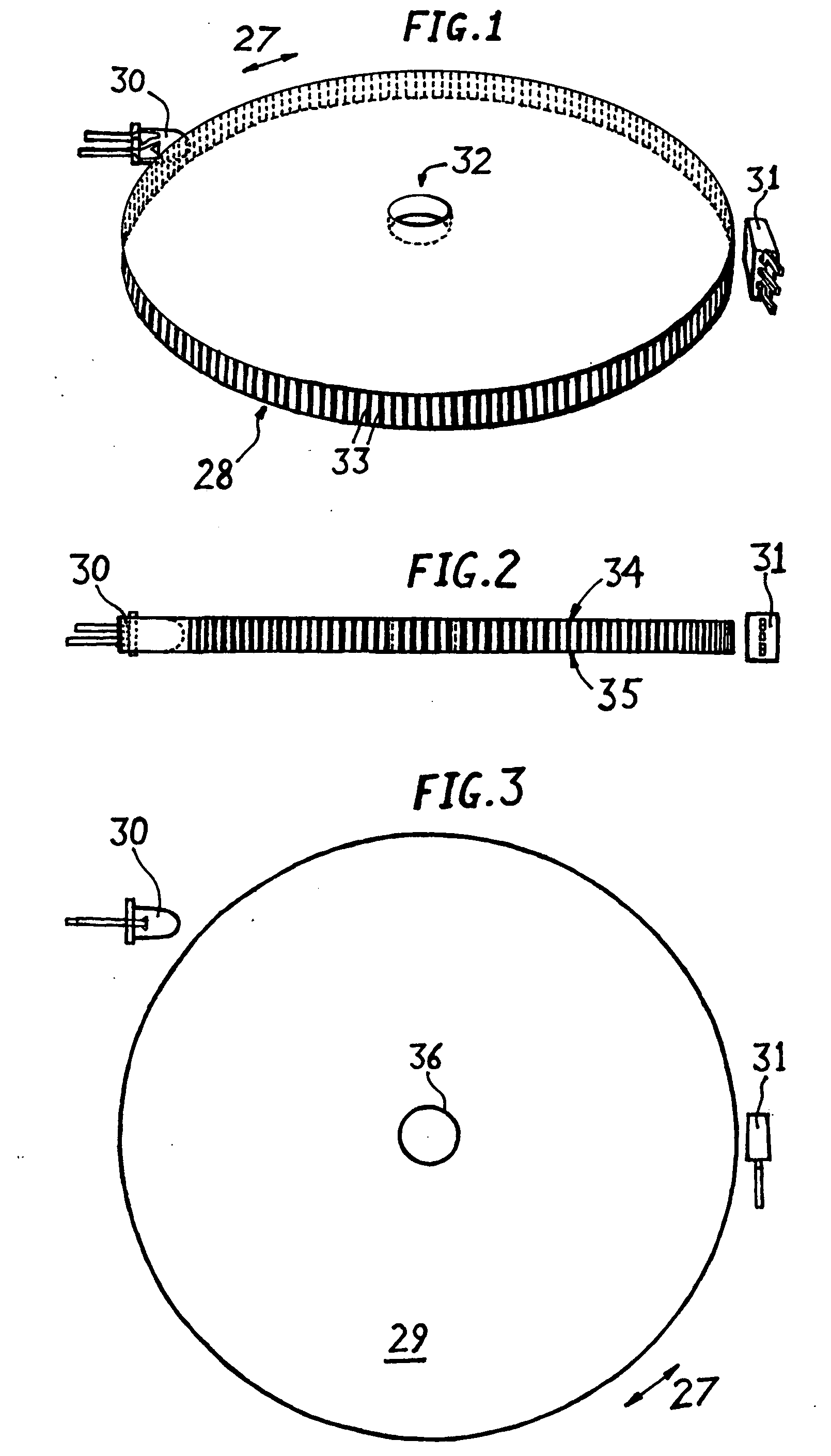Opto-electronic encoder with three-dimensional scales
a three-dimensional scale and encoder technology, applied in the field of optoelectronic encoders, can solve the problems of only limited structural constraints, impeded the freedom of rolling devices, and sacrificing the optical utilization of phototransmitter output, etc., to achieve the effect of increasing the size of the joint or its complexity, and reducing the cost of operation
- Summary
- Abstract
- Description
- Claims
- Application Information
AI Technical Summary
Benefits of technology
Problems solved by technology
Method used
Image
Examples
Embodiment Construction
[0033] Referring to FIG. 1, an approximately parallel beam of light of certain wavelengths or bandwidth is emitted by a phototransmitter, non-diffused LED 30, towards the cylindrical surface 28 of encoder disc 29 made of a transparent material—a thermoplastic or glass. Said parallel beam of light would have crossed encoder disc 29 as secant lines. However, due to refraction by the which constitutes encoder disc 29, said beam angles towards central axis 32, comes out roughly from near opto-electronic sensor 31 and falls on the photosensitive part of it. Opto-electronic sensor 31 consists of twin photodiode, phototransistor or light-dependent resistor units with one pin from each unit connected together; the physical positioning of said units is one on the other with electrical connections pointing downwards, like opto-electronic sensor units 54 and 55 inside dual opto-electronic sensor 50 of FIG. 6. The travel of said beam of light through all circular and elliptical sectional planes...
PUM
 Login to View More
Login to View More Abstract
Description
Claims
Application Information
 Login to View More
Login to View More - R&D
- Intellectual Property
- Life Sciences
- Materials
- Tech Scout
- Unparalleled Data Quality
- Higher Quality Content
- 60% Fewer Hallucinations
Browse by: Latest US Patents, China's latest patents, Technical Efficacy Thesaurus, Application Domain, Technology Topic, Popular Technical Reports.
© 2025 PatSnap. All rights reserved.Legal|Privacy policy|Modern Slavery Act Transparency Statement|Sitemap|About US| Contact US: help@patsnap.com



